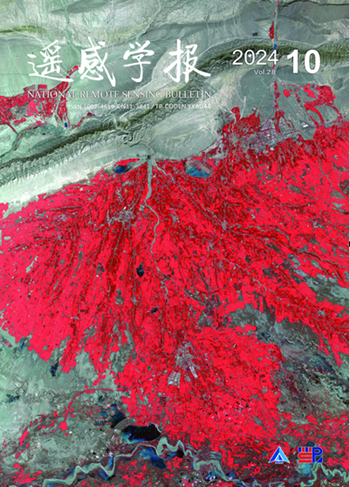Advanced Information Mining from Ocean Remote Sensing Imagery with Deep Learning
引用次数: 16
Abstract
In the past decades, the increasing ocean-research-oriented satellites, sensors, acquisition, and distribution channels have brought new tasks and challenges to mine information from such big data with complex and sparse information. The information mining requirements from big data and the advance in deep learning (DL) technology showed mutual promotive benefits in practical ocean information extraction and DL-based framework development. In 2020, scientists showed that most information retrievals from ocean remote sensing images could be accomplished using existing DL network frameworks, i.e., U-net for semantic segmentation and SSD (Single-Shot Multi-box Detection) for object detection [1]. The U-Net’s almost symmetric encoder-decoder structure and the skip connection between encoder-decoders have an excellent performance in retrieving fundamental semantic segmentation information in the ocean remote sensing imagery, such as coastal inundation area extractions [2]. SSD extracts feature maps of different data scales and takes a priori frames of different scales. Therefore, it has an excellent performance in detecting fundamental object detection problems in the ocean field, such as ship detection [3]. Although the off-the-shelf DL-based models are helpful, new developments in this field lead to a new era of DL-based technology for ocean remote sensing information mining. Specifically, two developments should be incorporated into the specific task-driven DL model: network architecture advance and domain-knowledge-based (expert knowledge) guidance in model parameter selection. Figure 1 upper panel shows the general framework used in [1] and the two newly added boxes that are the key elements we address in this paper.基于深度学习的海洋遥感图像高级信息挖掘
在过去的几十年里,越来越多的面向海洋研究的卫星、传感器、采集和分发渠道给从这种信息复杂而稀疏的大数据中挖掘信息带来了新的任务和挑战。大数据的信息挖掘需求和深度学习(DL)技术的进步在实际海洋信息提取和基于DL的框架开发中显示出相互促进的优势。2020年,科学家们表明,从海洋遥感图像中提取的大多数信息可以使用现有的DL网络框架来完成,即用于语义分割的U-net和用于对象检测的SSD(单镜头多盒检测)[1]。U-Net的几乎对称的编码器-解码器结构和编码器-解码器之间的跳跃连接在检索海洋遥感图像中的基本语义分割信息方面具有优异的性能,例如海岸淹没区提取[2]。SSD提取不同数据尺度的特征图,并获取不同尺度的先验帧。因此,它在检测海洋领域的基本目标检测问题方面具有出色的性能,例如船舶检测[3]。尽管现成的基于DL的模型是有帮助的,但该领域的新发展为海洋遥感信息挖掘带来了一个基于DL的技术的新时代。具体而言,在特定的任务驱动的DL模型中应包含两个发展:网络架构的改进和模型参数选择中基于领域知识(专家知识)的指导。图1上面板显示了[1]中使用的通用框架和两个新添加的框,这两个框是我们在本文中讨论的关键元素。
本文章由计算机程序翻译,如有差异,请以英文原文为准。
求助全文
约1分钟内获得全文
求助全文
来源期刊

遥感学报
Social Sciences-Geography, Planning and Development
CiteScore
3.60
自引率
0.00%
发文量
3200
期刊介绍:
The predecessor of Journal of Remote Sensing is Remote Sensing of Environment, which was founded in 1986. It was born in the beginning of China's remote sensing career and is the first remote sensing journal that has grown up with the development of China's remote sensing career. Since its inception, the Journal of Remote Sensing has published a large number of the latest scientific research results in China and the results of nationally-supported research projects in the light of the priorities and needs of China's remote sensing endeavours at different times, playing a great role in the development of remote sensing science and technology and the cultivation of talents in China, and becoming the most influential academic journal in the field of remote sensing and geographic information science in China.
As the only national comprehensive academic journal in the field of remote sensing in China, Journal of Remote Sensing is dedicated to reporting the research reports, stage-by-stage research briefs and high-level reviews in the field of remote sensing and its related disciplines with international and domestic advanced level. It focuses on new concepts, results and progress in this field. It covers the basic theories of remote sensing, the development of remote sensing technology and the application of remote sensing in the fields of agriculture, forestry, hydrology, geology, mining, oceanography, mapping and other resource and environmental fields as well as in disaster monitoring, research on geographic information systems (GIS), and the integration of remote sensing with GIS and the Global Navigation Satellite System (GNSS) and its applications.
 求助内容:
求助内容: 应助结果提醒方式:
应助结果提醒方式:


